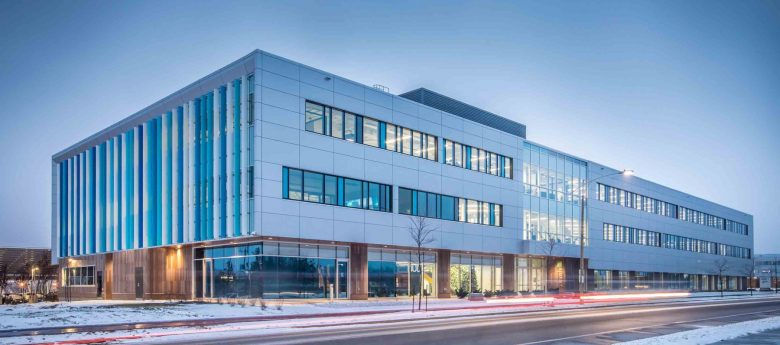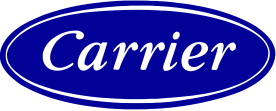Zero Carbon Building Relies on Carrier Automation
evolv1 is a uniquely modern building – the first zero carbon building constructed in accordance with LEED™ Platinum principles in Canada. The Cora Group selected Conestogo Mechanical to recommend, design, configure, install, and maintain a complete BAS solution, with engineering support of the local Carrier Enterprise office.

evolv1 is a uniquely modern 104,000 ft2 building – the first zero carbon building constructed in accordance with LEED™ Platinum principles and is the first multi-tenant building of its kind in Canada. Developed and managed by The Cora Group, evolv1’s building goals included:
- Installing a non-proprietary, BACnet building automation system
- Selecting a BAS to integrate a wide variety of mechanical and building system components
- Achieving a net positive, zero carbon output facility
- Representing the very latest in building comfort, control and operating technologies
The Cora Group selected Conestogo Mechanical to recommend, design and configure, install, and maintain a complete BAS solution. “We have worked with them before and knew they had the resources,” said Cora Chief Operating Officer, Adrian Conrad. To provide additional peace of mind to the Cora Group, Conestogo had the comprehensive BAS component and engineering support of the local Carrier Enterprise office.
When Conestogo officially came on board approximately two years prior to evolv1’s completion, their mandate was to:
- Review the mechanical budget
- Provide value engineering
- Create a full custom-designed graphics library to dynamically show – in real time – precisely how each monitored component is operating
- Execute a successful BAS solution
“From a controls and building automation perspective, evolv1 was the most interesting and technically-challenging project that we’ve had to date,” said Kyle Mavin, Conestogo’s HVACR/Controls Lead. “Creating a successful controls and BAS solution for a zero carbon, net positive and LEED Platinum certified building comes with its own inherent complexities. To address this, we integrated all third party equipment/systems using BACnet IP and BACnet MS/TP.” Mavin said. The Carrier i-Vu® system monitors and controls:
- VRF synchronous electric heat pump chillers
- Geothermal open wells
- Cistern water
- Solar heating wall
- Solar heating wall and plenums
- Electric vehicle charging stations
- Separate hydronic loops
- Fan coils and condensers
- Fresh air make-up air unit
- Tenant space CO2 levels
- Hot water heaters and boilers
- Mechanical room exhaust
- Refrigerant leak alarms
- Water meters and atrium air handler
In addition, native BACnet controllers including MPC XPs, AppControllers, and UC XPs were installed on various equipment in the building to monitor and control dampers, hot water and chiller water coils, pumps, valves, exhaust fans, vestibule heaters, and the reclaim water system, enabling hundreds of points of information to be transferred from the mechanical equipment into the i-Vu system.
As a result of the precise level of monitoring and control that i-Vu delivers, evolv1 generates more energy than it consumes and is the first building to earn the Zero Carbon Building – Design certification by the Canada Green Building Council (CaGBC) and the first-ever Zero Carbon award, also from the CaGBC.
A full graphics library was custom-designed to dynamically show precisely how each monitored component is operating. “With the detailed custom graphics and data we have through i-Vu Pro, our view into evolv1’s energy management, resource consumption, comfort and any performance variance is immediate. Creating such an advanced, graphic-rich BAS that delivers precise control to attain extremely stringent sustainability goals was a rare and rewarding challenge. And i-Vu ties it all together,” Mavin concluded.

